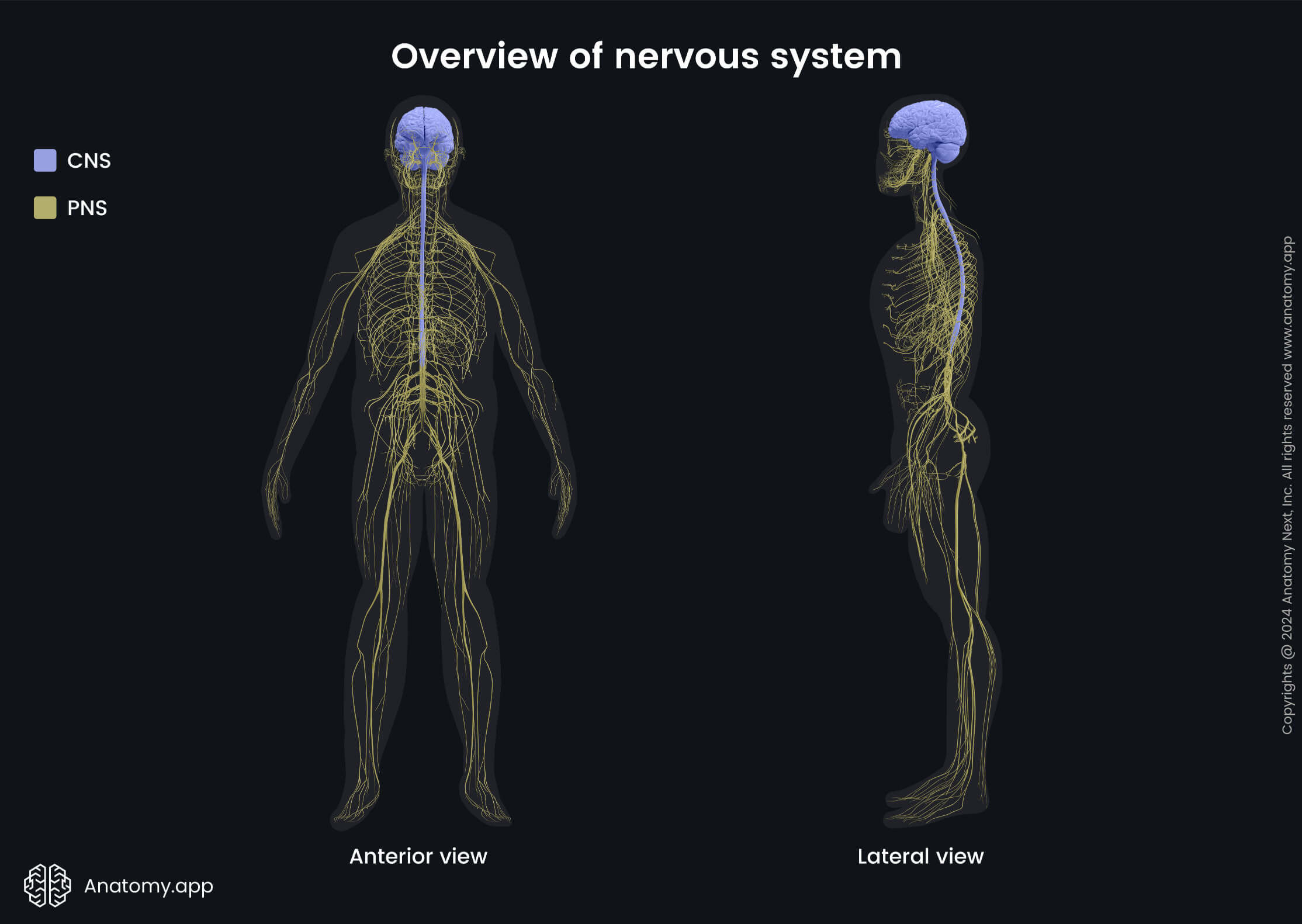Spinal cord (overview)
The spinal cord is a major structure of the nervous system, and it is continuous with the brain. The brain and spinal cord form the central nervous system (CNS).

The spinal cord resembles a long bundle of nervous tissue located within the vertebral canal of the spine. It is cylindrical-shaped and is about 15.7 - 20 inches (40 to 50 centimeters) long and 0.4 - 0.6 inches (1 to 1.5 cm) in diameter.
In the cranial direction, the spinal cord communicates with the medulla oblongata (Read more!) of the brainstem, while in the caudal direction, it terminates as the medullary cone at the first or second lumbar vertebrae (L1 / L2) level in adults.
In cross-section, the spinal cord is composed of two parts - the outer aspect is the white matter, while centrally is the grey matter.
The spinal cord connects the brain with the rest of the body through 31 pairs of spinal nerves (Read more!) that are classified as components of the peripheral nervous system (PNS).
The spinal cord is the CNS portion that provides innervation for the trunk and lower and upper limbs. It also contains numerous nuclei and sends and receives signals to and from different regions of the brain via nerve tracts.